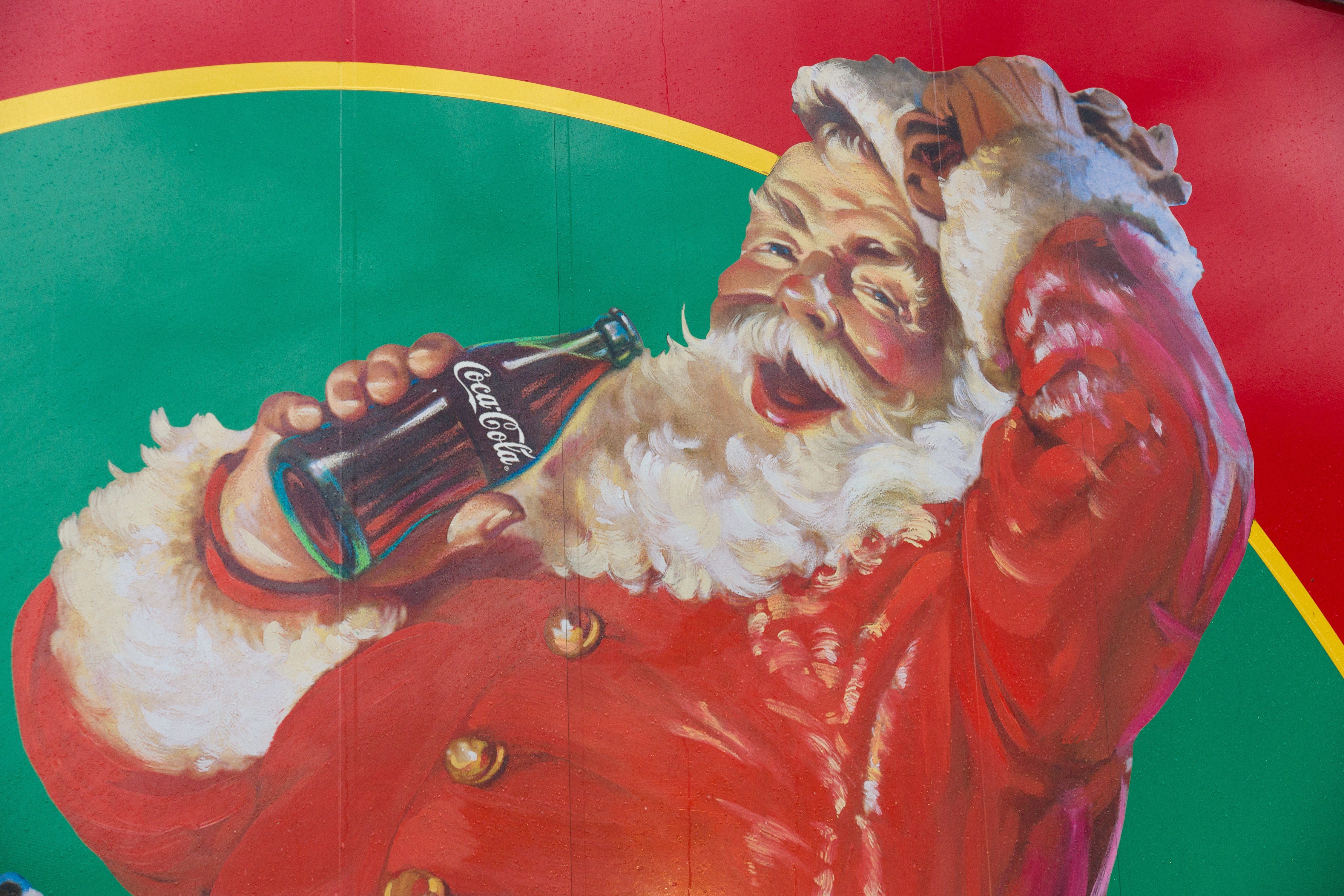Every Marketer's Christmas Wish: the legendary campaign that redefines advertising


What is Christmas for marketers?
Ah, Christmas! It is a time of joy, celebration, and, for marketers, a season of endless possibilities. Christmas is that magical time of the year when brands can truly connect with their audience, weaving narratives that not only sell products but become a part of cultural folklore.
For many, thinking of Christmas means primarily shopping for gifts for relatives, friends and colleagues. We all spend more this time of the year. This is why Christmas marketing is a critical period for retailers and marketers in both Europe and North America, characterised by a variety of marketing strategies.
Fonte: Moosend
Consider this:
- In the United States, holiday retail sales reached an impressive $943-$960 billion last year. In 2023, holiday retail sales in the U.S. are forecast to reach about 957.3 billion U.S. dollars. This indicates a substantial market size during the holiday season.
- Additionally, in 2022, there was an estimated increase of 2.5% in online holiday sales in the U.S. alone, reflecting the growing importance of e-commerce. By 2023, e-commerce retail is expected to account for 17.7% of total retail sales, and by 2024 to be up to 19,2%.
Image sourced from: emarketer
- Europe is no exception to this trend. In 2022, about 44% of Europeans planned to do their Christmas shopping online, reflecting the growing importance of digital marketing strategies for this period.
Image sourced from: Digital Marketing Community
- Email marketing remains a powerful tool during the holiday season, with abandoned cart emails getting a 45% open rate and 21% receiving clicks. Notably, half of the users who clicked on these emails completed a purchase. Personalised subject lines in emails can increase open rates by 26%, further emphasising the effectiveness of personalised marketing strategies during Christmas.
Image sourced from: WiseStamp
- Approximately 37% of consumers in the US are influenced by gift ideas they discover on their favourite brands’ websites, and 23% engage in window shopping. The influence of online influencers is significant among younger shoppers (25-34 years old), with 69% finding inspiration for holiday gifts through them. Notably, 50% of Christmas shoppers prefer retail brands that practice sustainability.
Image sourced from: Sitecore
- In Europe, Christmas marketing often reflects the diverse cultural practices across different countries. This means adapting marketing messages and products to cater to local traditions and preferences, which can range from specific types of holiday foods to unique gift-giving customs. For instance, in Germany, Christmas markets are famous, and products like Stollen (a fruit bread) and Glühwein (mulled wine) are popular. So marketers can tailor their product offerings to include these items, capitalising on local preferences. In contrast, in Spain, the focus might be on turrones (nougat) and seafood dishes, requiring a different product assortment. Also, gift-giving customs vary widely. In some countries, gifts are exchanged on December 25th, while in others, like Spain and Italy, it might happen on January 6th, aligning with Epiphany. Understanding these nuances helps in timing marketing campaigns and sales strategies.
Image sourced from: Reddit
So, obviously, understanding the seasonality of consumer interests is crucial. Knowing the best time to advertise specific products like office Christmas party dresses or when consumers are most likely to search for Christmas cocktail recipes can help marketers reach their target audience at the most pivotal moments.
In this post, we propose you embark together on a sleigh ride through history to explore some of the most influential marketing campaigns, kicking off with a special nod to Coca-Cola’s iconic Santa Claus to unravel the secrets behind these iconic successes.
The Magic of Coca-Cola’s Santa: A Red-Suited Revolution
When we think of Christmas advertising, Coca-Cola’s Santa Claus invariably comes to mind. This campaign, which began in the 1930s, didn’t just sell soda; it shaped our very perception of Santa Claus. Artist Haddon Sundblom’s depiction of Santa for Coca-Cola, with his jolly demeanour and bright red suit, transformed the image of St. Nicholas from a stern, bishop-like figure into the beloved character we know today.
The genius of this campaign lay in its emotional connection. Coca-Cola tapped into the joyous spirit of Christmas and linked it to their brand, creating a heartwarming association that persists to this day. It was a masterstroke in branding, intertwining Coca-Cola’s identity with festive cheer and family gatherings.
Image sourced from: CampaignLive
While specific statistics about the effectiveness of these campaigns in terms of sales increase, brand recognition, or consumer engagement are difficult to find, it’s widely acknowledged in the marketing world that Coca-Cola’s Santa Claus advertising has had a lasting impact on holiday marketing and consumer culture, particularly in the US and Europe.
Check out these interesting facts and figures:
- In 2020, Coca-Cola’s “Holidays Are Coming” scored high in key measures, including long-term return potential (96 out of 100), brand recall (100 out of 100), and creating branded memories (96 out of 100). This campaign, first broadcast in 1995, achieved the highest possible star rating of 5.9 on System1’s ad effectiveness ranking, indicating its exceptional long-term brand-building capability.
- Also, the “World Needs More Santas” (2023) achieved “exceptional” scores on System1’s ad effectiveness ranking.
Coca-Cola hashtags like #TogetherTastesBetter engaged very well audiences on social media platforms, emphasising unity and shared experiences. The company also utilised influencer marketing, partnering with local influencers in different countries to amplify their campaign reach.
Five historical Christmas campaign
Coca-Cola is not the only example of a historical campaign that has set the bar in the field of marketing.
Let’s explore together a few more examples:
- The Gift of Connection – John Lewis’s “The Long Wait” (2011): British retailer John Lewis is known for its Christmas adverts, but “The Long Wait” stands out. It tells the story of a young boy eagerly awaiting Christmas morning, not to receive gifts but to give one to his parents. This twist on the gift-giving narrative, focusing on the joy of giving rather than receiving, struck a chord with audiences, emphasizing the emotional rather than the material aspect of the holiday season.
Image sourced from: TheDrum
- Sparkling Holiday – De Beers’ “A Diamond is Forever” (1947): Though not strictly a Christmas campaign, De Beers’ “A Diamond is Forever” has influenced holiday jewelry gifting significantly. By linking diamonds to the eternal nature of love, De Beers made diamonds synonymous with the most heartfelt Christmas presents. This campaign redefined luxury advertising and set the precedent for high-end holiday marketing.
Image sourced from: The Atlantic
- The Wonder of Innovation – Apple’s “1984” (1984): Premiering during the Super Bowl, Apple’s “1984” ad for the Macintosh computer, directed by Ridley Scott, was a game-changer. While not a Christmas ad, its impact rippled through all seasons, teaching marketers the power of storytelling and the importance of positioning a brand as a revolutionary force against the status quo.
Image sourced from: Statista
- Embracing Inclusivity – Microsoft’s “Reindeer Games” (2018): This heartwarming ad featured a young gamer with limited mobility finding connection and joy through Microsoft’s adaptive controller. It wasn’t just about inclusivity in gaming; it was about inclusivity in the joy of the season, resonating deeply with a diverse audience.
Image sourced from: Statista
- Nostalgia Meets Modernity – Lego’s “Rebuild the World” (2019): Lego took a unique approach by blending nostalgia for its classic toys with a modern message of creativity and rebuilding the world. The campaign, which launched around Christmas, resonated with both children and adults, reminding them of the limitless potential of imagination – a key theme of the festive season.
Image sourced from: Reddit
How many of these advertisements do you remember? For those of you who remember at least 2 or 3, you will probably also remember the feeling that these advertisements gave you. That very special mix of Christmas feelings and brand identity. And maybe you even bought these products.
In the next session, we are going to explore the basic ingredients of Christmas marketing.
The magic mix: 6 key ingredients of successful Christmas marketing
What do Coca-Cola's Santa Claus, the first Mac commercial and Lego bricks have in common? Have you wondered? They are all great successes, and all indiscriminately use six ingredients. The basis of Christmas marketing.
Let's look at them together:
- Emotional Appeal: Successful Christmas ads often evoke emotions like nostalgia, joy, and warmth. For example, Coca-Cola's "Holidays Are Coming" ad, with its iconic trucks and jingles, evokes feelings of nostalgia and happiness in 29% and 27% of British viewers, respectively. Other notable examples are Salisbury and Apple. The 2014 WWI-themed Christmas ad, based on the Christmas truce of 1914, powerfully evoked nostalgia and the spirit of togetherness, leaving a lasting emotional impact on viewers. Apple's holiday ads, such as the "Misunderstood" campaign, where a teen appears absorbed in his iPhone but is actually creating a family video, beautifully capture the warmth and joy of family connections during the holidays.
- Cultural Resonance: Tailoring campaigns to local traditions enhances relatability. We saw how Christmas markets and traditional foods play into marketing strategies in Europe, while in the US, the focus might be on family gatherings and gift-giving.
- Memorable Branding: Effective campaigns ensure brand recall. Coca-Cola's ad scored a perfect 100 in brand recall, demonstrating the power of strong, consistent branding. The same is true for John Lewis: their annual holiday advertisements are renowned for their emotional depth, storytelling, and unique characters.
- Innovative Use of Media: Today, a mix of traditional and digital media, leveraging social media platforms and interactive campaigns, is vital for broader reach. One famous example is Starbucks. Famous for its holiday cups, Starbucks utilises social media to amplify this tradition. They encourage customers to share their holiday cup experiences on platforms like Instagram, creating a buzz around their brand each Christmas season. This strategy not only capitalises on user-generated content but also enhances customer engagement and brand.
- Community and Inclusivity: Campaigns that foster a sense of community and inclusivity resonate well. Embracing diverse holiday traditions and promoting a message of togetherness can be powerful.
- Sustainability and Ethics: With growing environmental consciousness, ads promoting sustainable practices and ethical products are gaining traction. Good examples of this kind include Ikea and Patagonia. Ikea's holiday campaigns often focus on sustainable living. They've often promoted eco-friendly products and emphasized reducing waste during the festive season, aligning their marketing with their commitment to sustainability. Known for its environmental activism, Patagonia's Christmas marketing often underscores the importance of sustainable practices. They've run campaigns discouraging overconsumption and promoting the durability of their products, advocating for ethical consumerism.
In conclusion: Crafting your own Christmas Legend
What makes all these campaigns legendary is not just their creativity but their ability to tap into the universal truths of the holiday season – joy, family, giving, ethics, inclusivity, culture…and a touch of magic.
There lies the key for marketers aspiring to craft a Christmas campaign that stands the test of time: finding a unique message that resonates on an emotional level and aligns seamlessly with the brand's identity.
As the festive season approaches, let these legendary campaigns inspire you. Whether you’re selling a product, a service, or an idea, remember that the essence of a memorable Christmas campaign lies in its ability to capture the heart of the season and tell a story that echoes in the hearts of its audience long after the decorations come down.
Merry marketing!

Don't Waste Your Talent. Turn It Into a Career With a Course That Fits Your Needs!
Keep reading

5 Reasons You Need a Digital Marketing Strategy

5 Tips for a Successful Cross-Channel Marketing Campaign

UX Design: A complete guide to plan an efficient User Experience

